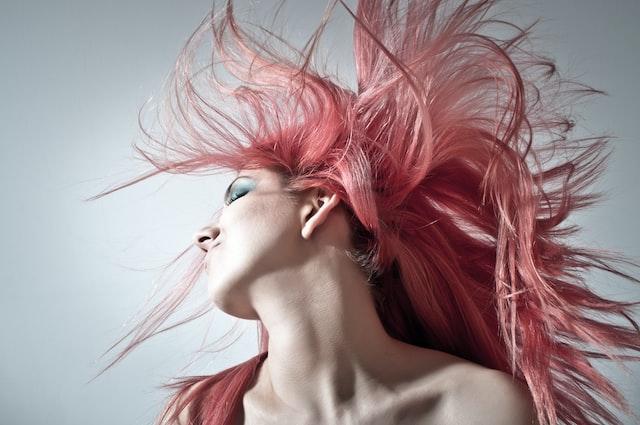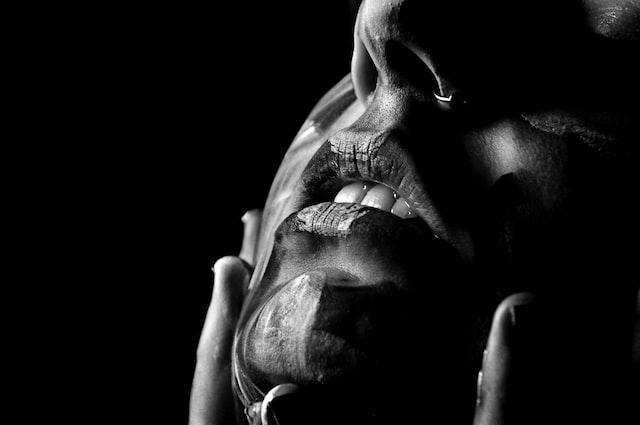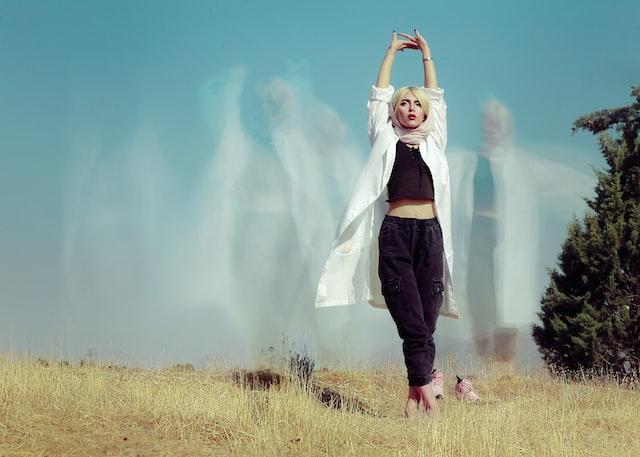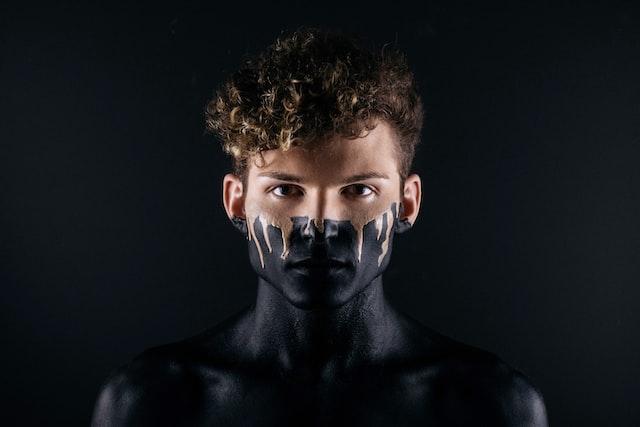Capturing a breathtaking fine art portrait requires an entirely different approach than traditional portrait photography – it takes creativity and an understanding of composition, editing techniques, and lighting to create something unique and artistic. If you’re looking to take your portraits up a notch, this post is for you. We’ll share tips for mastering the art of fine art portrait photography.

What is Fine Art Portrait Photography?
Fine art portrait photography is a unique style of photography that focuses on creating artistic and visually stunning images of people. Traditional portrait photography focuses on making the model look their best and showcasing their personality. That’s not the case with fine art portrait photography. Instead, the model often takes backstage to the emotion, story, or idea the photographer wants to portray.
With this style of photography, props, lighting, and backgrounds can be used to draw attention away from the model and onto the concept itself. Fine art portrait photography often involves elaborate setups and unique perspectives, and the final images may incorporate a variety of techniques, such as creative lighting, interesting compositions, and experimental editing.
What Makes Fine Art Photography Unique?

The main difference between traditional portrait photography and fine art photography is the focus on artistic expression. In traditional portraits, the goal is to create a clear image of the model, often using flattering lighting and proper posing techniques. Fine art portrait photography aims to create an image that is visually stunning and emotionally evocative. The photographer is the artist and their subject becomes part of the art itself.
9 Tips for Shooting Portraits in a Fine Art Style
Ready to create stunning fine art portraits? Follow these nine tips for mastering fine art portrait photography:
Tip 1: Setting the Scene: How to Use Lighting and Backgrounds to Create a Fine Art Portrait
Creating the perfect scene is essential for fine art portrait photography. The lighting you choose will depend heavily on your concept. For example, bright and direct light can be used to create a sharp and dramatic look, whereas soft and diffused light will give your image a dreamy and surreal feel.
Backgrounds are also key. Consider using props or interesting backdrops to add visual interest to the scene. Natural elements like trees, grass, or flowers can be great for creating a softer, more romantic feel.
Tip 2: The Art of Composition: Using Rules and Elements to Create Beautiful Portraits
Composition is key when shooting fine art portraits. Pay attention to details like leading lines and how the elements within your frame interact with one another. It’s helpful to pay close attention to the “rule of thirds” when positioning your subject.
In the rule of thirds, the frame is divided into thirds both vertically and horizontally. Positioning the model along these lines can help create an aesthetically pleasing composition. Also, consider using elements like depth of field and negative space to create a dynamic image.
Tip 3: Posing for Perfection: How to Pose Your Subject for Fine Art Portraits
Posing for fine art portraits can be tricky. Since you want to create an image that conveys a concept or emotion, the poses should be more subtle and natural looking. Try to keep your model’s body language relaxed yet intentional. Encourage them to take breaks in between shots so they don’t become too stiff or uncomfortable.
When it comes to posing, remember that less is more. You want the focus to be on the concept and not the model’s pose. Ask your model to move around or slightly shift their position while keeping the same general shape. This will help keep the overall look of your shots natural and relaxed.

Tip 4: The Final Touch: Editing Techniques for Creating Fine Art Portraits
Editing is an essential step in creating beautiful fine art portraits. You can use a variety of techniques to enhance the look of your final images, such as color grading and selective blurring. Or, you may choose to desaturate certain colors or add special effects like vignettes and textures.
You can also experiment with more subtle edits such as adjusting the contrast or temperature. Just remember to keep your edits minimal, as too much manipulation can take away from the natural beauty of the shot.
Tip 5: Experimentation is Key: How to Take Your Portraits to the Next Level
If you want to stand out in the world of fine art portrait photography, experimentation and creativity are key. Don’t be afraid to try new things and push the boundaries of what’s considered “fine art.” For instance, you can experiment with different lighting setups or use unlikely props to add interest to the scene.
You can also mix up your poses or try something completely out of the ordinary. The more you experiment, the better chance you have at creating a unique and beautiful fine art portrait.
Tip 6: Convey an Idea or Emotion: How to Use Your Images to Tell a Story
Fine art portraits are all about conveying an idea or emotion. Think carefully about what you want your image to say and use elements like lighting, composition, and posing to create that feeling.
Keep in mind that the idea or emotion should be consistent throughout the entire image, from the background to the little details. When done correctly, your images will have a powerful impact on viewers and tell a unique story.

Tip 7: Use ProGrade Digital Products for Quality Output
To ensure the highest quality output for your fine art portrait photography, it’s important to use professional-grade equipment and accessories. ProGrade Digital offers a range of high-performance memory cards, card readers, and other accessories that can help you achieve the best results possible. With fast read and write speeds, durable construction, and advanced features, ProGrade Digital products are designed to meet the needs of professional photographers.
Tip 8: Consistency is Key: How to Develop Your Fine Art Portrait Style
The best way to develop your fine art portrait style is by creating consistent images. Whether you’re shooting in the studio or outdoors, keep an eye on elements like color palette, lighting, and composition. This will help create a look that viewers can easily recognize and associate with you.
You should also be aware of how your images look on different devices like smartphones, computers, and TVs. This will help ensure that your work looks its best no matter where it’s being viewed.
Tip 9: Create a Signature Style: How to Make Your Portraits Distinctive
Creating a signature style is essential for standing out in the world of fine art portrait photography. Think about what makes your images unique and capitalize on that. Challenge yourself to come up with new ideas and themes for each shoot, or try experimenting with different lighting setups or editing techniques.
By creating a distinctive style for your fine art portraits, you’ll be able to differentiate yourself from other photographers and attract clients who appreciate your unique vision.
Final Thoughts
Fine art portrait photography is more about being an artist than a photographer, and the camera is your medium. The best artists combine artistic vision with perfect technique, and the same goes for fine art portrait photographers, too. Strive to create images that are both beautiful and meaningful, and don’t be afraid to experiment with new ideas. With the right tools, technique, and creative vision, you can create stunning fine art portraits that will wow viewers for years to come.





